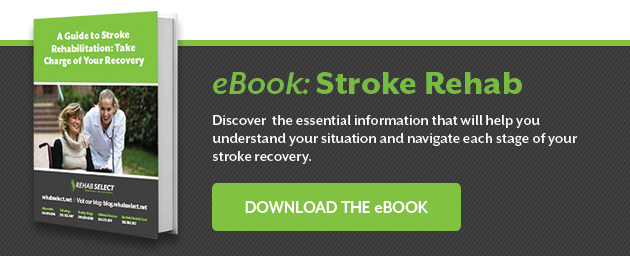
Every year, over 700,000 people in the United States suffer a stroke. Roughly two-thirds of these people survive and need rehabilitation. Post stroke rehabilitation helps survivors become more independent and improves their quality of life. While post stroke rehabilitation is not able to reverse the brain damage caused by the acute care episode, proper post stroke care can significantly assist people in achieving the best long-term outcome possible.
Post Stroke Rehab
Post-stroke rehabilitation helps those who have suffered strokes relearn the skills they lost due to the brain damage caused by the acute care episode. For instance, these skills may include coordinating leg movements to allow an individual to walk again or performing steps in a complex activity. Therapists teach stroke survivors new ways to perform tasks to compensate for the loss of movement.
Following a stroke, an individual may only be capable of dressing or bathing using just one arm or hand. They may also need to learn how to communicate effectively if their ability to speak is compromised. Reacquiring the ability to perform these daily activities is the first stage stroke survivors need in order to regain their independence. Rehabilitation experts agree that a well-focused, carefully directed repetitive practice is a fundamental element of any post stroke rehabilitation program.
Disabilities a Stroke Can Cause
The kinds of disabilities and the degree of impairment a stroke causes depend on the area of the brain that is damaged and how much damage was done. Comparing one person’s disability to another is difficult because every stroke may damage different parts of the brain and cause the following:
- Sensory disturbances
- Paralysis
- Difficulty controlling movement
- Problems understanding and using language
- Emotional disturbance
Some sensory disturbances include the inability to feel pain, position, temperature, and touch. Incontinence may also become an issue.
Paralysis or difficulty controlling movements is very common following a stroke. Paralysis can affect the arm, face, leg or one whole side of the body. Swallowing may be affected, and if the cerebellum is damaged, coordinating movements becomes difficult. This causes problems with walking, balance and posture.
Problems understanding and using language affects one quarter of stroke survivors. Their ability to write, speak and understand written and spoken language is impaired. Patients may become incapable of speaking the words they are thinking and unable to put words together in logical, grammatically correct sentences.
Emotional disturbance affects many of the people who survive a stroke. Understandably, anxiety, fear, sadness, frustration and grief for their mental and physical losses are common. Clinical depression may result, and post stroke care is needed to help mitigate this issue.
Signs of clinical depression include:
- Irritability
- Lethargy
- Sudden weight gain/loss
- Fatigue
- Drastic change in eating patterns
- Self-loathing
- Social withdrawal
- Sleep disturbances
- Suicidal thoughts
Clinical depression following a stroke is treatable with medications and counseling.
Problems with memory and thinking are also common. When a stroke damages the parts of the brain that are responsible for learning, memory and awareness, short-term memory and a shortened attention span are common. These patients sometimes lose their ability to comprehend meaning, make plans, learn new tasks or engage in complex mental activity.
Post Stroke Care Within 24 to 48 Hours After Stroke
Post stroke rehab starts in the acute-care hospital once the individual’s condition is stable. The initial therapy intends to promote independent movement because a stroke frequently paralyzes or weakens part of the body.
Passive and Active Range of Motion Exercises
Passive exercises are those exercises that the therapist actively participates in, such as helping a patient move a limb repetitively. Active exercises are exercises that patients perform on their own without assistance from a therapist. Many factors determine how fast patients progress in therapy. The extent of damage done by the stroke plays an enormous part in the length of time that therapy is necessary.
Post Stroke Rehab in Alabama
Some individuals who survive a stroke will need to continue rehabilitation for months or even years afterward. This treatment journey helps them maintain and refine their skills. It’s important to find a facility with dedicated therapists who are familiar with post stroke rehabilitation. Post stroke care professionals are here across our five Alabama locations to assist you or a loved one with post stroke care. Schedule a tour of one of our facilities today.





